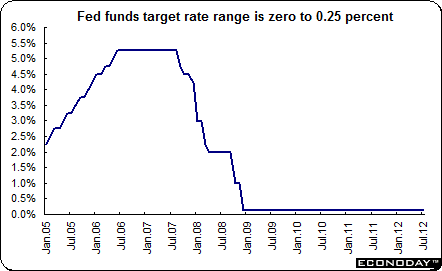The Federal Reserve System, or the “Fed”, is the U.S. central bank. The regulation of the banking system, consumer protection laws and the control of monetary policy to this quasi-government institution were mandated by Congress. The Federal Reserve is independent of the Treasury, but is the Treasury Department's personal banker. The President appoints the seven governors (designating a Chair and Vice-chair) to the Board of Governors for 14-year terms, but the Senate must confirm them. The Fed, through a system of 12 district banks, provides services to the commercial banking sector. The district banks regulate and examine commercial banks.
The Fed manages monetary policy through the Federal Open Market Committee (FOMC), which is composed of the seven governors and five of the 12 district bank presidents. A distinctive feature of the FOMC is the rotation of the 12 district bank presidents as active voting members of the FOMC. As the European Central Bank ponders what expansion will do to their already sizable policy making executive committee, one of things they are considering is mimicking the Fed’s rotation policy. The FOMC meets eight times a year to set the agenda for credit market policy based on economic conditions.
In the mid-1980s, the estimation of daily reserve needs and forecasts of M1 and M2 money supply were monitored closely by Fed-watching economists. But since the Fed no longer directly targets monetary aggregates, following economic indicators has gained stature instead. This was especially so when Alan Greenspan, a bonafide card carrying economist was Fed chairman. His successor, Ben Bernanke, is another card carrying economist and he has continued to follow economic data closely as well. Mr Bernanke is now serving his second term as Fed chairman.

The Fed had maintained a 1 percent Fed funds interest rate from June 2003 to May 2004 before beginning its series of 25 basis point increases. Most overseas analysts thought that the increases were long overdue. In the wake of the August 2007 financial market unraveling, the Fed once again started to cut interest rates aggressively and sent the fed funds target rate to a range of zero to 0.25 percent as the Fed fought both the credit crunch and the collapsing real economy. The Fed also turned to aggressive quantitative easing programs as well in its attempts to right the financial sector and turn the economy around. Prospects are that the fed funds rate will remain at record levels for some time to come. With interest rates not expected to change in the foreseeable future, once again Fed watchers are looking to the weekly money supply and balance sheet data to monitor the Fed’s activities.
|